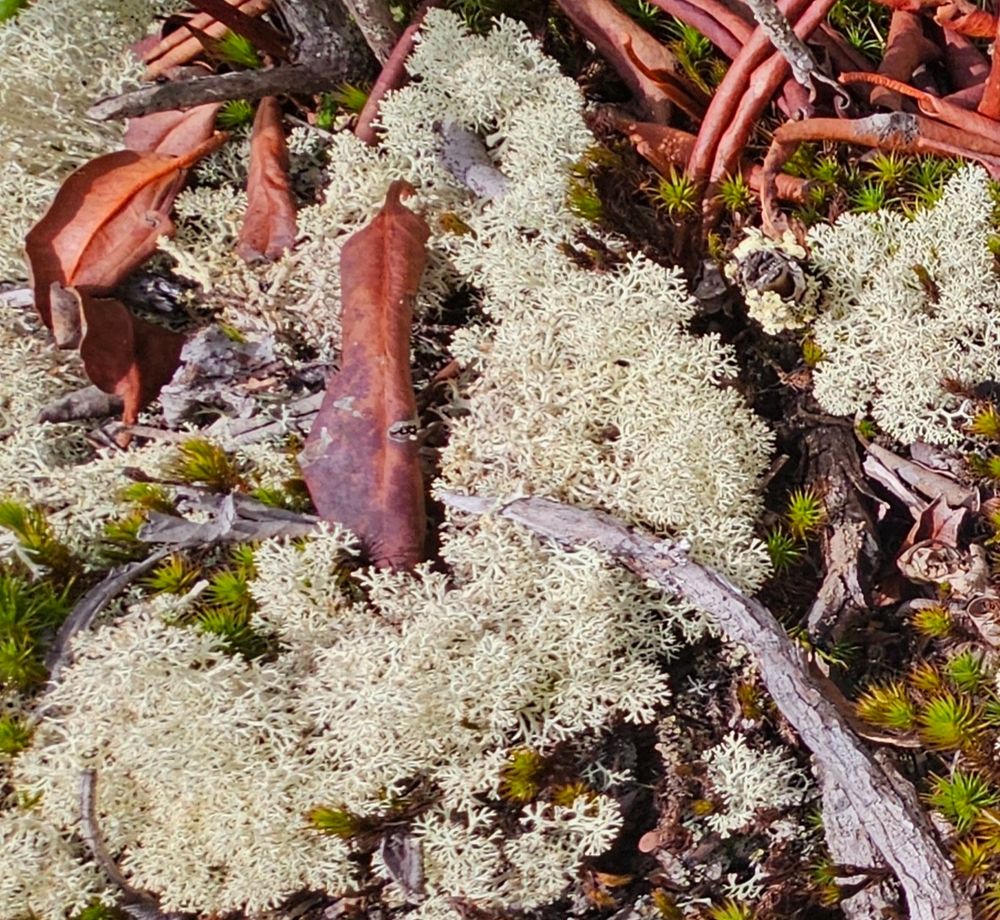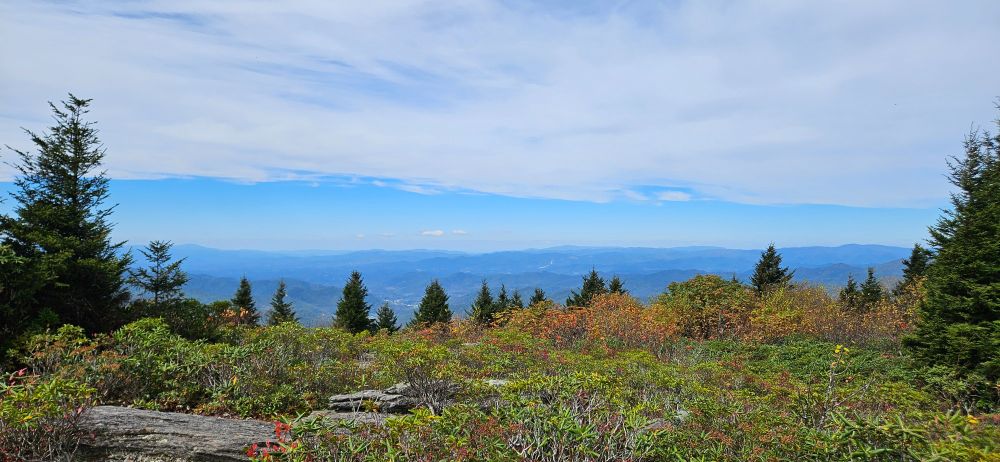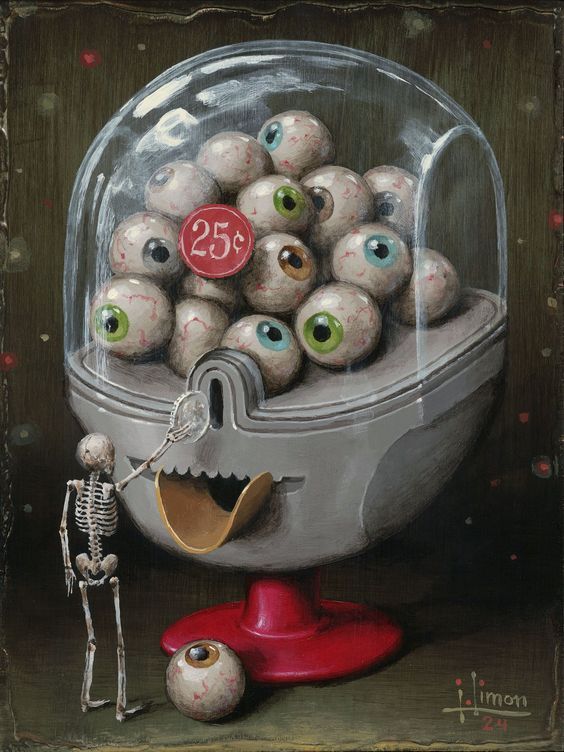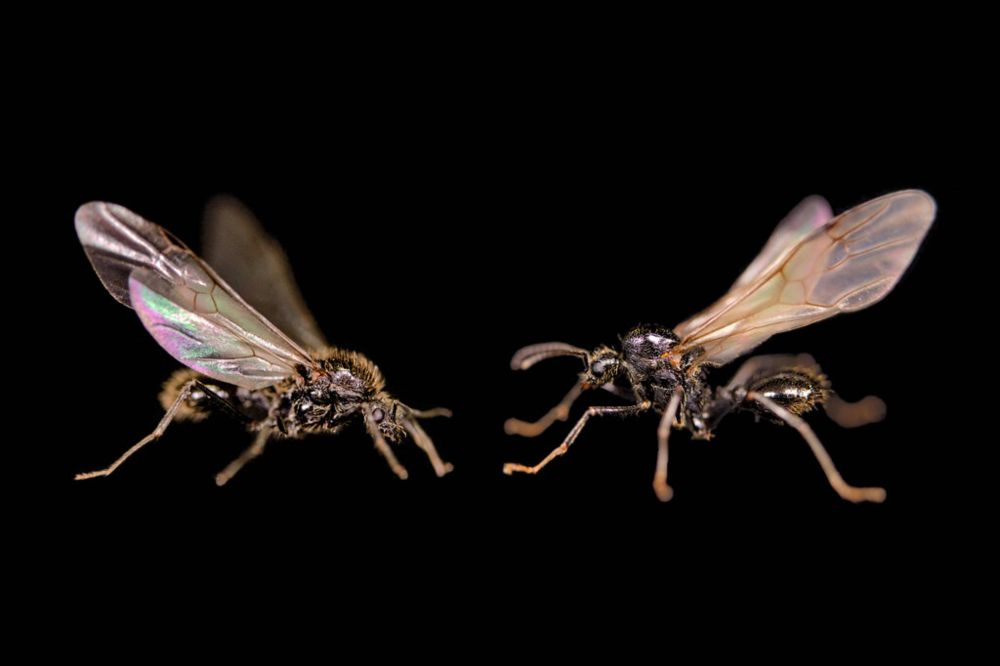
A North American clubmoss that resembles a miniature pine tree. It is an evergreen, low-growing plant with a creeping underground stem and upright, branching shoots.
Historically, its spores were used for flash powder*, and its harvest for Christmas greens has led to it being threatened in some areas.
*Lycopodium powder is a yellow-tan dust-like powder, consisting of the dry spores of clubmoss plants, or various fern relatives. When it is mixed with air, the spores are highly flammable and are used to create dust explosions as theatrical special effects. The powder was traditionally used in physics experiments to demonstrate phenomena such as Brownian motion.
https://en.wikipedia.org/wiki/Lycopodium_powder

A North American clubmoss that resembles a miniature pine tree. It is an evergreen, low-growing plant with a creeping underground stem and upright, branching shoots.
Historically, its spores were used for flash powder*, and its harvest for Christmas greens has led to it being threatened in some areas.
*Lycopodium powder is a yellow-tan dust-like powder, consisting of the dry spores of clubmoss plants, or various fern relatives. When it is mixed with air, the spores are highly flammable and are used to create dust explosions as theatrical special effects. The powder was traditionally used in physics experiments to demonstrate phenomena such as Brownian motion.
https://en.wikipedia.org/wiki/Lycopodium_powder

A North American clubmoss that resembles a miniature pine tree. It is an evergreen, low-growing plant with a creeping underground stem and upright, branching shoots.
Historically, its spores were used for flash powder*, and its harvest for Christmas greens has led to it being threatened in some areas.
*Lycopodium powder is a yellow-tan dust-like powder, consisting of the dry spores of clubmoss plants, or various fern relatives. When it is mixed with air, the spores are highly flammable and are used to create dust explosions as theatrical special effects. The powder was traditionally used in physics experiments to demonstrate phenomena such as Brownian motion.
https://en.wikipedia.org/wiki/Lycopodium_powder
Dendrolycopodium obscurum (rare clubmoss, ground pine, princess pine)
12.10.2025 17:13 — 👍 1 🔁 0 💬 0 📌 0

Reindeer lichen, also known as reindeer moss, is not a fungus but a lichen, a symbiotic partnership between a fungus and an alga (or cyanobacterium). The fungus provides structure and protection, while the alga produces food through photosynthesis. These hardy, much-branching, grey-green lichens are a vital food source for reindeer and caribou, especially in winter, and can be found in various habitats, from dry woods to alpine tundra.
Key Characteristics
Appearance: Forms pale yellow-green or grey-green cushions with much-branching, round, and fibrous structures.
Structure: The branches have tiny, brownish knobs at the tips where spores are produced.
Habitat: Thrives in well-drained, open environments, including dry woods, scrubby flatwoods, and alpine tundra.
Growth: It is a slow-growing organism, with growth occurring by producing new branches and elongating older ones.

Reindeer lichen, also known as reindeer moss, is not a fungus but a lichen, a symbiotic partnership between a fungus and an alga (or cyanobacterium). The fungus provides structure and protection, while the alga produces food through photosynthesis. These hardy, much-branching, grey-green lichens are a vital food source for reindeer and caribou, especially in winter, and can be found in various habitats, from dry woods to alpine tundra.
Key Characteristics
Appearance: Forms pale yellow-green or grey-green cushions with much-branching, round, and fibrous structures.
Structure: The branches have tiny, brownish knobs at the tips where spores are produced.
Habitat: Thrives in well-drained, open environments, including dry woods, scrubby flatwoods, and alpine tundra.
Growth: It is a slow-growing organism, with growth occurring by producing new branches and elongating older ones.

Reindeer lichen, also known as reindeer moss, is not a fungus but a lichen, a symbiotic partnership between a fungus and an alga (or cyanobacterium). The fungus provides structure and protection, while the alga produces food through photosynthesis. These hardy, much-branching, grey-green lichens are a vital food source for reindeer and caribou, especially in winter, and can be found in various habitats, from dry woods to alpine tundra.
Key Characteristics
Appearance: Forms pale yellow-green or grey-green cushions with much-branching, round, and fibrous structures.
Structure: The branches have tiny, brownish knobs at the tips where spores are produced.
Habitat: Thrives in well-drained, open environments, including dry woods, scrubby flatwoods, and alpine tundra.
Growth: It is a slow-growing organism, with growth occurring by producing new branches and elongating older ones.
Cladonia rangiferina (reindeer cup lichen, reindeer lichen, grey reindeer lichen)
12.10.2025 17:06 — 👍 0 🔁 0 💬 0 📌 0

Polytrichum commune (great golden maidenhair, great goldilocks, common haircap moss, common hair moss)
AND
Thuidium delicatulum (common fern moss, delicate fern moss)
With fall leaves interspersed

Polytrichum commune
Size: It is one of the largest mosses, with stems that can grow up to 70 cm tall, though they are often shorter.
Leaves: The leaves are long, pointed, and arranged spirally at right angles around the stem, giving the top of the plant a star-like appearance.
Moisture response: The leaves tightly curl around the stem when dry and unfurl when exposed to moisture.
Reproduction: It has specialized male and female shoots for reproduction. The spore case is covered by a "cap" with hairs, which gives the moss its common name.
Internal structure: It is an endohydric moss, meaning it conducts water from the base of the plant. It has specialized water-conducting tissues called hadrom (analogous to xylem) and leptom (analogous to phloem).
Habitat: It grows in a variety of habitats, including bogs, heaths, sandy soils, and woodlands. It prefers moist, slightly acidic soil but is more tolerant of sunlight and drier conditions than many other mosses.
Distribution: It is found worldwide in temperate and boreal regions of the Northern Hemisphere, as well as in Central America, New Zealand, and Australia.

Family
Thuidiaceae (fern mosses; a pleurocarpous moss family)
Description
Easy to identify, fern mosses look like tiny ferns. Just like many fern fronds, the branches are on a single plane, are longer at the base, and become shorter toward the tips. The branches are 3-times pinnate (3-times feather compound), just as in many ferns. Instead of sticking straight up or lying flat, these mosses lean over at an angle — again, like fern fronds. The color of fern mosses varies from golden brown to bright spring green.
Fern mosses are carpet-forming, branching (pleurocarpous) mosses that can cover rotten logs, boulders, or patches of damp soil. They also often appear mixed in among other types of mosses.
The leaves are very small; they are so tiny, they are not helpful in field identifications, even with a hand lens. However, even tinier than the leaves, the mosses in this group also have interesting, often branching filaments called paraphyllia scattered on the stems; with a hand lens, these make the moss look fuzzy, which is another ID character. To the naked eye, the combination of tiny leaves, paraphyllia, and tiny wartlike bumps (papillae) give fern mosses a finely bumpy appearance.
The sporophytes in this group are not commonly seen. When present, they are stalked, pointy-tipped, oblong or cylindrical capsules that are slightly curved and inclined, giving the overall shape of a cormorant’s, duck’s, or flamingo’s head.
It is difficult for amateurs to distinguish between the species of fern mosses. Botanists use microscopes to examine the tiny leaves, paraphyllia, and cells for exact identifications.
Length: frond-like stems to about 1 inch; colonies may cover large patches of soil, rock, or rotting logs.
FROM:
https://mdc.mo.gov/discover-nature/field-guide/fern-mosses-thuidium-mosses
Polytrichum commune (great golden maidenhair, great goldilocks, common haircap moss, common hair moss)
AND
Thuidium delicatulum (common fern moss, delicate fern moss)
12.10.2025 16:39 — 👍 1 🔁 0 💬 0 📌 0

Identification --
Thallus: The main body is a crusty, granular layer that can be gray, white, or have a pinkish tinge.
Apothecia: The most distinctive feature is the bright pink, rounded or domed caps of the apothecia, which are the reproductive structures.
Stalks: The pink apothecia sit atop very short, white stalks, making them look like tiny pink mushrooms.
Size: The apothecia are typically 1–4 mm in diameter, and the stalks are no taller than 6 mm.
Habitat: It thrives in open, permanently lit areas with acidic, unstable soils, such as heathlands, sandy areas, and disturbed ground like roadsides.
Distribution: It is a widespread lichen found across Europe and North America.

Identification --
Thallus: The main body is a crusty, granular layer that can be gray, white, or have a pinkish tinge.
Apothecia: The most distinctive feature is the bright pink, rounded or domed caps of the apothecia, which are the reproductive structures.
Stalks: The pink apothecia sit atop very short, white stalks, making them look like tiny pink mushrooms.
Size: The apothecia are typically 1–4 mm in diameter, and the stalks are no taller than 6 mm.
Habitat: It thrives in open, permanently lit areas with acidic, unstable soils, such as heathlands, sandy areas, and disturbed ground like roadsides.
Distribution: It is a widespread lichen found across Europe and North America.

Identification --
Thallus: The main body is a crusty, granular layer that can be gray, white, or have a pinkish tinge.
Apothecia: The most distinctive feature is the bright pink, rounded or domed caps of the apothecia, which are the reproductive structures.
Stalks: The pink apothecia sit atop very short, white stalks, making them look like tiny pink mushrooms.
Size: The apothecia are typically 1–4 mm in diameter, and the stalks are no taller than 6 mm.
Habitat: It thrives in open, permanently lit areas with acidic, unstable soils, such as heathlands, sandy areas, and disturbed ground like roadsides.
Distribution: It is a widespread lichen found across Europe and North America.
Dibaeis baeomyces (pink earth lichen, fairy puke lichen)
12.10.2025 16:15 — 👍 0 🔁 0 💬 0 📌 0

The Blue Ridge Mountains

The Blue Ridge Mountains

The Blue Ridge Mountains

The Blue Ridge Mountains (and some of the Black Mountains at the back and to the left)
Colorful mountaintops abound 🩵
12.10.2025 15:08 — 👍 1 🔁 0 💬 0 📌 0

Lookit the scuppernong blueberry cobbler I baked today! It took 3.5 hrs (the filling took quite a few steps), but I am so excited to try it. (Baked with our neighbor's fresh scuppernongs, the state fruit of NC.)
10.10.2025 20:58 — 👍 1 🔁 0 💬 1 📌 0
All info above (including alt text), as per Wikipedia ♡
08.10.2025 15:10 — 👍 0 🔁 0 💬 0 📌 0

Sicyos angulatus forms mats or climbs using tendrils. The leaves are veined & lobed, the flowers are green to yellowish green, & the fruits form clusters of small pepos.
pepos: an indehiscent fleshy one-celled many-seeded berry (such as a pumpkin, squash, melon, or cucumber) that has a hard rind and is the characteristic fruit of the gourd family
dehiscence: the splitting of a mature plant structure along a built-in line of weakness to release its contents. This is common among fruits, anthers and sporangia. Sometimes this involves the complete detachment of a part. Structures that open in this way are said to be dehiscent. Structures that **do not** open in this way are called INDEHISCENT, and rely on other mechanisms such as decay, digestion by herbivores, or predation to release the contents

Sicyos angulatus forms mats or climbs using tendrils. The leaves are veined & lobed, the flowers are green to yellowish green, & the fruits form clusters of small pepos.
pepos: an indehiscent fleshy one-celled many-seeded berry (such as a pumpkin, squash, melon, or cucumber) that has a hard rind and is the characteristic fruit of the gourd family
dehiscence: the splitting of a mature plant structure along a built-in line of weakness to release its contents. This is common among fruits, anthers and sporangia. Sometimes this involves the complete detachment of a part. Structures that open in this way are said to be dehiscent. Structures that **do not** open in this way are called INDEHISCENT, and rely on other mechanisms such as decay, digestion by herbivores, or predation to release the contents.

Sicyos angulatus forms mats or climbs using tendrils. The leaves are veined & lobed, the flowers are green to yellowish green, & the fruits form clusters of small pepos.
pepos: an indehiscent fleshy one-celled many-seeded berry (such as a pumpkin, squash, melon, or cucumber) that has a hard rind and is the characteristic fruit of the gourd family
dehiscence: the splitting of a mature plant structure along a built-in line of weakness to release its contents. This is common among fruits, anthers and sporangia. Sometimes this involves the complete detachment of a part. Structures that open in this way are said to be dehiscent. Structures that **do not** open in this way are called INDEHISCENT, and rely on other mechanisms such as decay, digestion by herbivores, or predation to release the contents.

Sicyos angulatus forms mats or climbs using tendrils. The leaves are veined & lobed, the flowers are green to yellowish green, & the fruits form clusters of small pepos.
pepos: an indehiscent fleshy one-celled many-seeded berry (such as a pumpkin, squash, melon, or cucumber) that has a hard rind and is the characteristic fruit of the gourd family
dehiscence: the splitting of a mature plant structure along a built-in line of weakness to release its contents. This is common among fruits, anthers and sporangia. Sometimes this involves the complete detachment of a part. Structures that open in this way are said to be dehiscent. Structures that **do not** open in this way are called INDEHISCENT, and rely on other mechanisms such as decay, digestion by herbivores, or predation to release the contents.
Sicyos angulatus (bur cucumber, star-cucumber) is an annual vine in the gourd family, Cucurbitaceae, and native to eastern North America. The plant forms mats or climbs using tendrils. The leaves are veined & lobed, the flowers are green to yellowish green, & the fruits form clusters of small pepos.
08.10.2025 14:26 — 👍 2 🔁 0 💬 1 📌 0

listen. when dolly parton’s sister says it’s time for us all to be prayer warriors for dolly. you fucking pray for dolly
07.10.2025 22:47 — 👍 7619 🔁 2069 💬 123 📌 263

"Death created time to grow the things that it would kill" - Rust
06.10.2025 15:49 — 👍 1 🔁 0 💬 0 📌 0

So freaky! ♡♡♡
03.10.2025 14:20 — 👍 0 🔁 0 💬 0 📌 0

Phobetron pithecium - Wikipedia
Talk about a spooky season find! Meet the hag moth/monkey slug. These creatures are common in eastern North America and feed on various woody plants (e.g. rose, sassafras, dogwood, and oak). The adult female hag moth resembles a bee and the male resembles a wasp.
en.m.wikipedia.org/wiki/Phobetr...
03.10.2025 14:13 — 👍 0 🔁 0 💬 1 📌 0
Who's your favorite Jedi? Wrong answers only.
02.10.2025 14:41 — 👍 2 🔁 1 💬 1 📌 2
50 miles skated; 🛼 30 yoga/mat classes🧘🏼♀️ (9 w/weights 🏋🏼♀️), 30 dedicated meditations 🪷, and 20 hours hiked ⛰️ #monthlyfitnessnumbers
01.10.2025 16:39 — 👍 1 🔁 0 💬 0 📌 0
Thank you. It's just the mountains being gorgeous. The pictures take themselves 🤗
29.09.2025 16:26 — 👍 1 🔁 0 💬 0 📌 0
Post a happy TV theme you like. (The spookier, the better! 🤍👻)
youtu.be/fv47kML6_cU?...
27.09.2025 17:55 — 👍 1 🔁 1 💬 0 📌 0
Dance when you’re broken open
Dance, if you’ve torn the bandage off
Dance in the middle of the fighting
Dance in your blood
Dance when you’re perfectly free
-Jalāl al-Dīn Muḥammad Rūmī
22.09.2025 14:53 — 👍 1 🔁 0 💬 0 📌 0
"megalohydrothalassophobia" is my new favorite image search term #DeeplyDisturbing 🌊🌊🗽
22.09.2025 03:25 — 👍 2 🔁 1 💬 0 📌 0

#Art #Acrylic #Horror #Humor
Horror meets humor today on the #SundayFunnies as artist Jason Limon provides us with a bit of eye candy. Enjoy.
21.09.2025 13:33 — 👍 128 🔁 23 💬 2 📌 1

A common, translucent jellyfish named for its moon-like shape.
They have a pale, bell-shaped body with a diameter that can reach up to 16 inches. Four horseshoe-shaped gonads are visible in the center of the bell, often appearing pink or blue.
These carnivorous animals drift on ocean currents, using short tentacles to capture and eat zooplankton and other small organisms. Their sting is very mild and generally unfelt by humans.
Today, I touched about fifty Aurelia aurita (also called the common jellyfish, moon jellyfish, moon jelly, saucer jelly). I did not even know that there were jellyfish that one could touch w/o being noticably, if not very painfully, stung 🙂↕️
📷: Wikipedia
22.09.2025 01:37 — 👍 3 🔁 0 💬 0 📌 0
Dolly has the best ears! 😍
20.09.2025 23:51 — 👍 1 🔁 0 💬 1 📌 0
Quote with a gif you can hear.
20.09.2025 12:46 — 👍 2 🔁 1 💬 0 📌 0
It is okay to rest. Being good is overrated. I say: be present. And, failing that, be eating chocolate 😁
19.09.2025 04:08 — 👍 1 🔁 0 💬 0 📌 0
Go on a news diet. Even if you are only cutting 100 "calories" a day, it helps. Take breaks! Touch grass. #EasierSaidThanDone And ignore all unsolicited advice (e.g. mine) 🤗
19.09.2025 03:49 — 👍 1 🔁 0 💬 1 📌 0
'Tis a cult classic! 💩
17.09.2025 10:57 — 👍 1 🔁 0 💬 0 📌 0

The 90s, writ large
Post a movie you like with a terrible Rotten Tomatoes score.
www.rottentomatoes.com/m/empire_rec...
17.09.2025 02:15 — 👍 1 🔁 0 💬 1 📌 0

This plant features a tall, leafless stalk (scape) topped with a rounded cluster (umbel) of pink to purple flowers. The leaves are grass-like and basal, often dying back as the flowers emerge in late summer.

This plant features a tall, leafless stalk (scape) topped with a rounded cluster (umbel) of pink to purple flowers. The leaves are grass-like and basal, often dying back as the flowers emerge in late summer.
This bee is known for its striking, iridescent green color, which can sometimes appear coppery or golden.

This plant features a tall, leafless stalk (scape) topped with a rounded cluster (umbel) of pink to purple flowers. The leaves are grass-like and basal, often dying back as the flowers emerge in late summer.
This bee is known for its striking, iridescent green color, which can sometimes appear coppery or golden.

This plant features a tall, leafless stalk (scape) topped with a rounded cluster (umbel) of pink to purple flowers. The leaves are grass-like and basal, often dying back as the flowers emerge in late summer.
This bee is known for its striking, iridescent green color, which can sometimes appear coppery or golden.
Allium stellatum (prairie onion, autumn onion, cliff onion, or glade onion) and the pollinator in three of the images is a Augochlora pura (pure green sweat bee) 💛
17.09.2025 02:08 — 👍 1 🔁 0 💬 0 📌 0
I can't remember the details, and can't find them now, for my favorite Robert Redford anecdote, but: When Indecent Proposal was being discussed, someone asked a film critic if she would sleep with Robert Redford for $1 million, and she replied, "Yes, but where would I get the money?"
16.09.2025 13:37 — 👍 1377 🔁 264 💬 10 📌 13




































